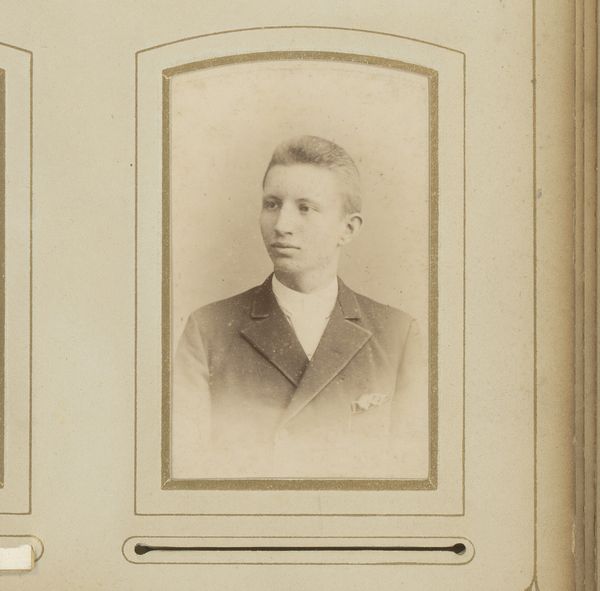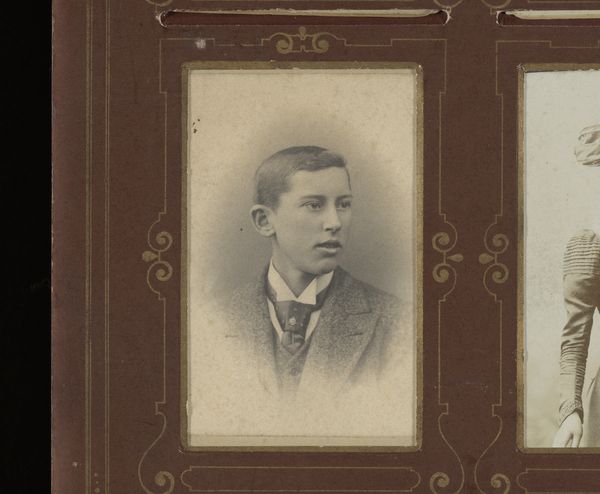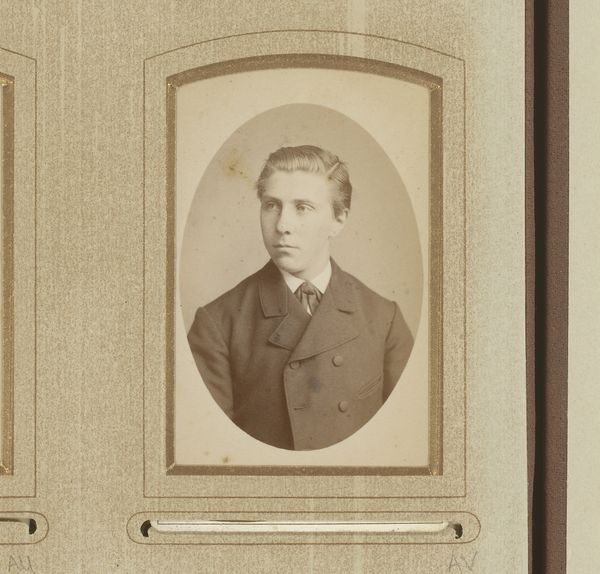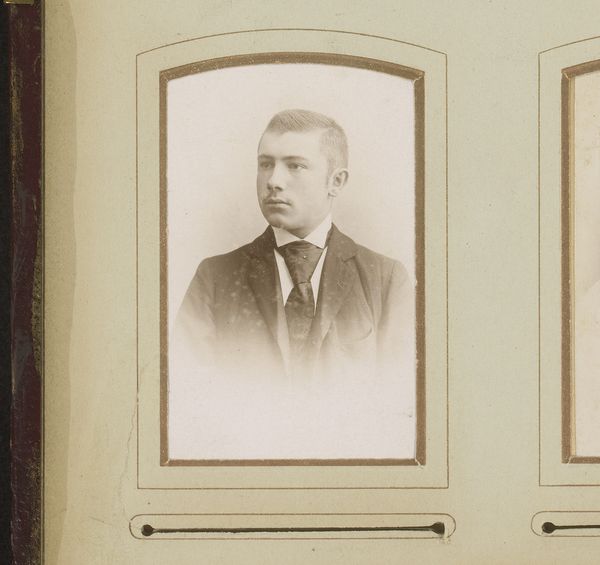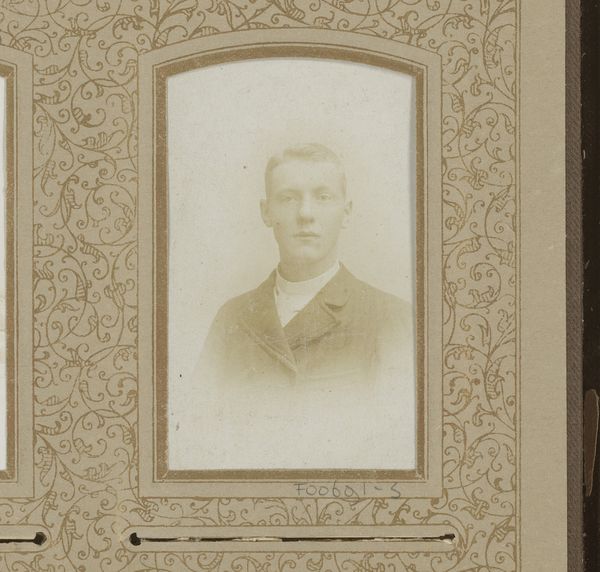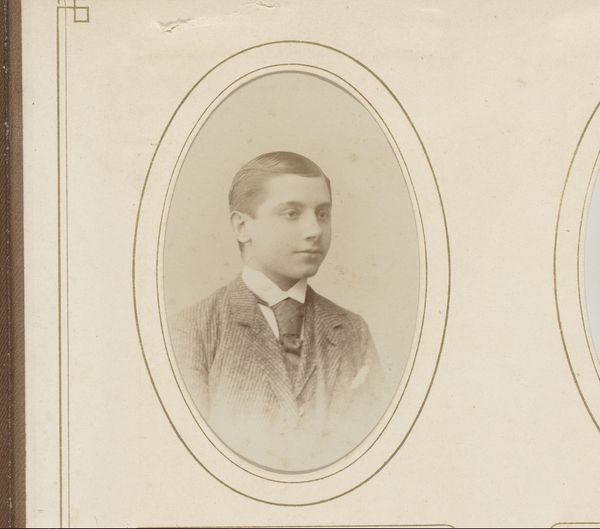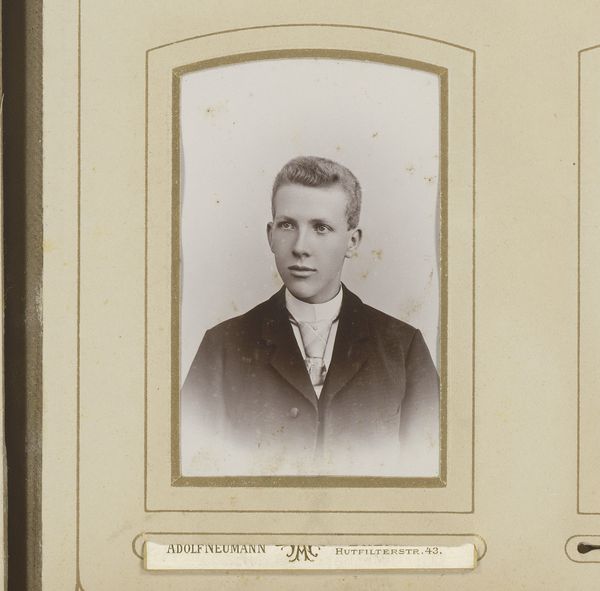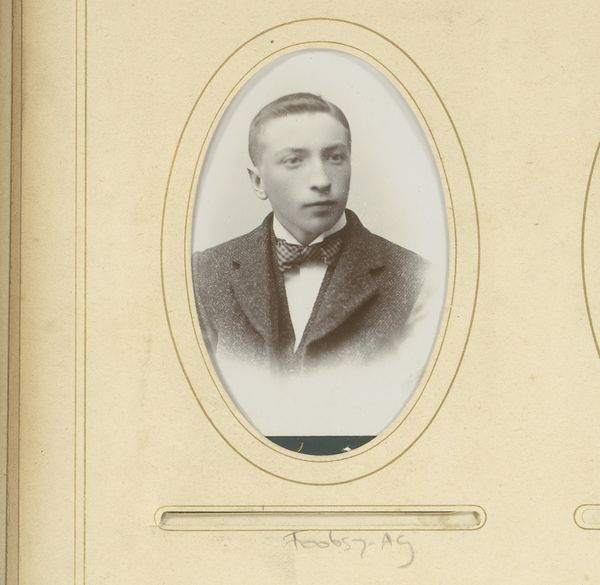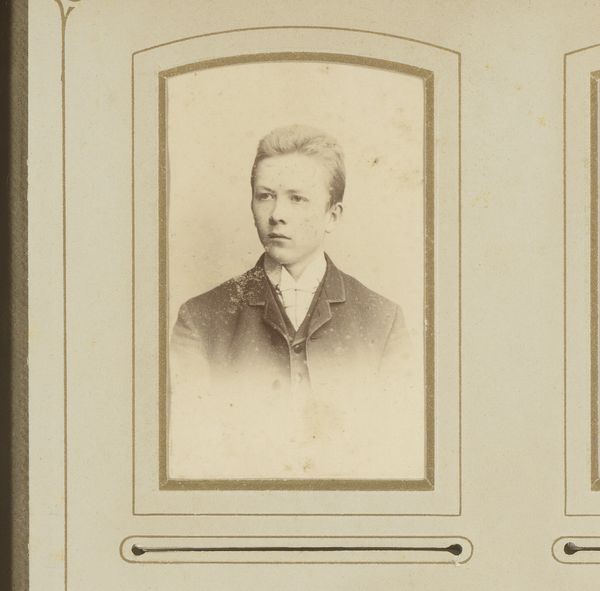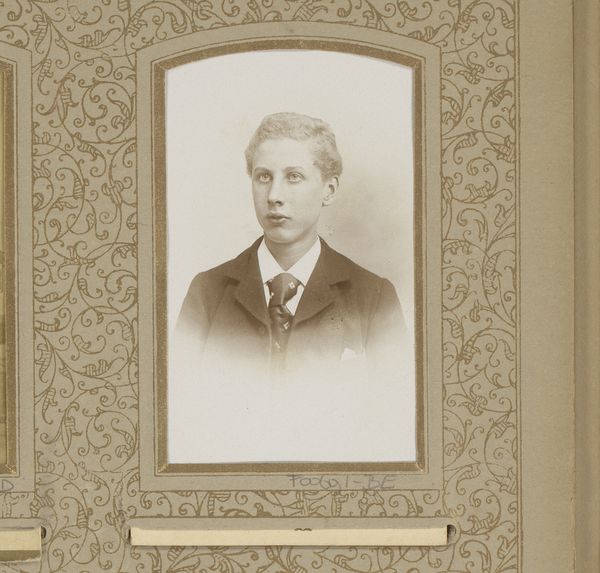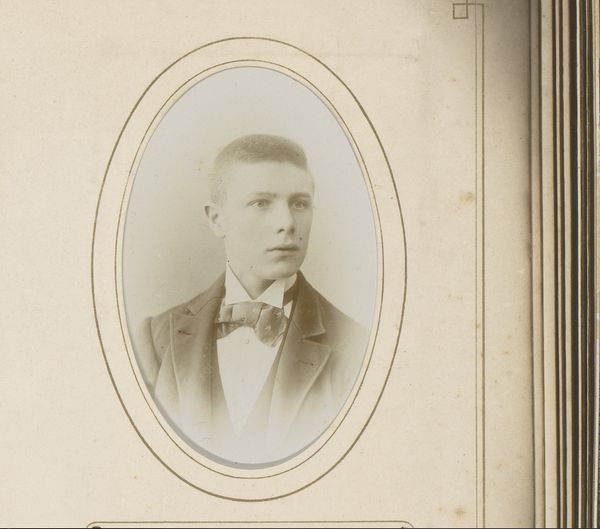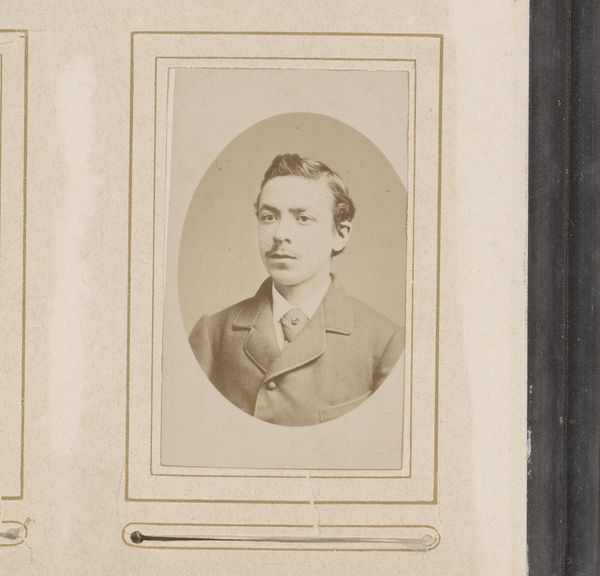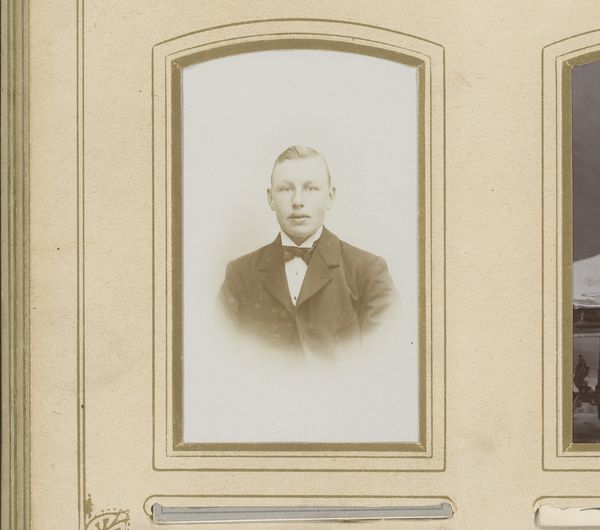
photography, gelatin-silver-print
#
portrait
#
photography
#
historical photography
#
gelatin-silver-print
#
academic-art
Dimensions: height 85 mm, width 53 mm
Copyright: Rijks Museum: Open Domain
Curator: Here we have "Portret van een jongeman", or "Portrait of a Young Man," a gelatin silver print produced around 1890 by Möbus & Cie. Editor: There’s a compelling stillness to this portrait. He seems poised, almost hesitant, caught between adolescence and adulthood in this stark, formal framing. Curator: The choice of gelatin silver print offered a high level of detail and tonal range compared to earlier photographic processes. The labor involved in coating and processing these prints, especially in a studio like Möbus & Cie., was considerable. Editor: Exactly. And consider the context. This young man likely belonged to a burgeoning middle class aspiring to capture and preserve their likeness, mirroring the upper classes' tradition of painted portraiture. Was this perhaps to show upward mobility? To signal adherence to new social mores? Curator: It reflects the democratizing potential of photography in that era. But access still hinged on the means to afford the studio session, the printing, and so on. We shouldn’t over-romanticize its accessibility. How do you feel about the composition? Editor: His formal attire - that ornate bowtie and the pocket square peeking from his coat pocket - signals societal expectations around masculinity and representation, all meticulously staged within the photographic frame. Curator: Möbus & Cie, were a successful photography firm. Their consistent process allowed them to deliver repeatable high quality. Think of it as an early form of industrial art production – creating portraits for a burgeoning market, employing darkroom assistants, retouchers, and salespeople. Editor: That mass production arguably transformed photography’s very definition, influencing our modern conceptions of portraiture, personal identity, and representation. It brings up many questions on how images create our self. Curator: I think understanding the physical means behind creating these photos helps us view it less as capturing something and more as an intentional construct from its very inception. The material conditions undergirding even the most apparently "objective" image always reveal some trace of their creation. Editor: It encourages reflection not just on the image itself but also on the complex, historically contingent, matrix of power and desire embedded in it. Curator: Looking closely at "Portret van een jongeman" allows us to consider these intertwined questions of representation, social mobility, and the mechanics of image production in late 19th-century photography. Editor: Absolutely. It prompts us to see beyond a face and engage with a story— a reflection on identity within larger narratives of that time.
Comments
No comments
Be the first to comment and join the conversation on the ultimate creative platform.
